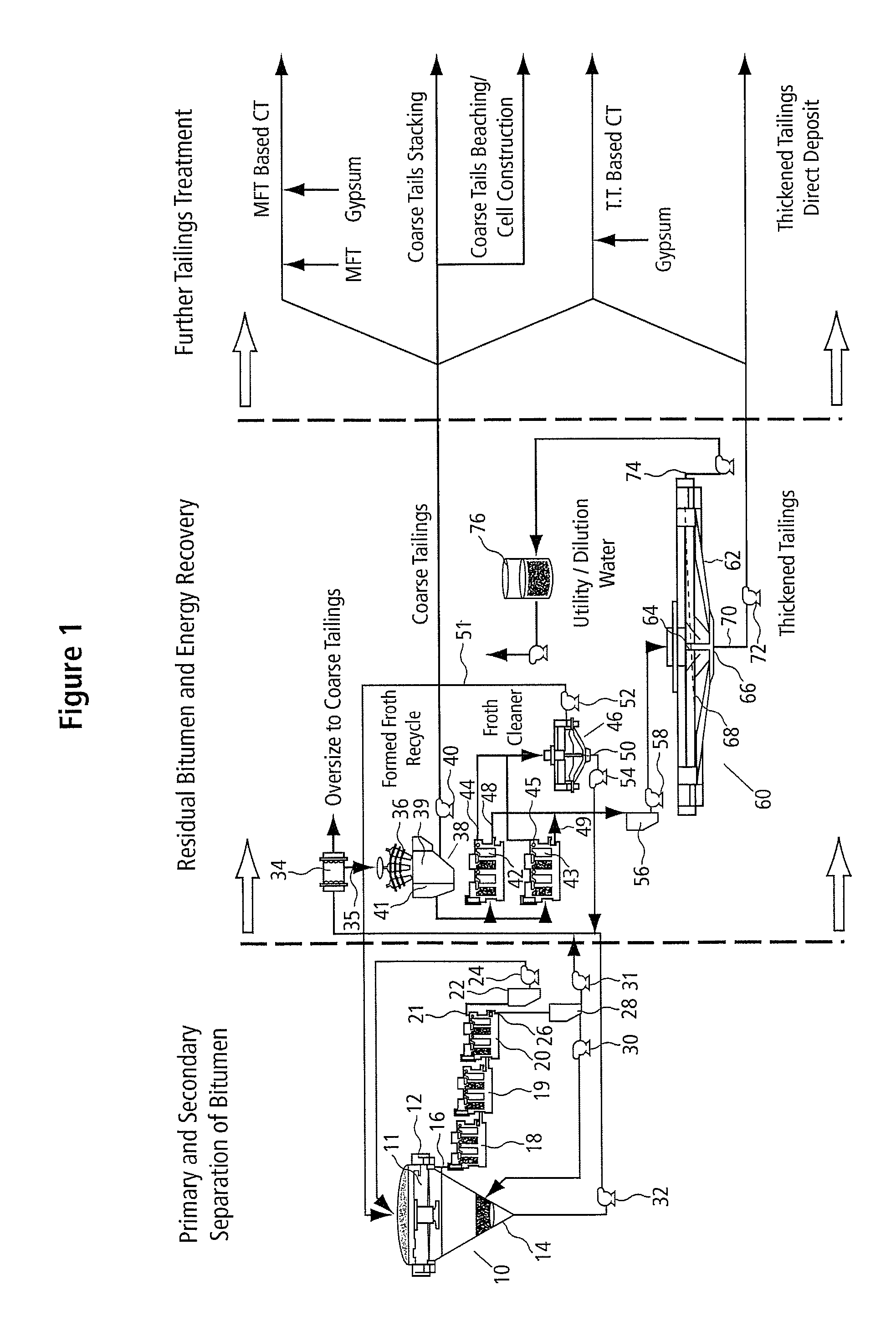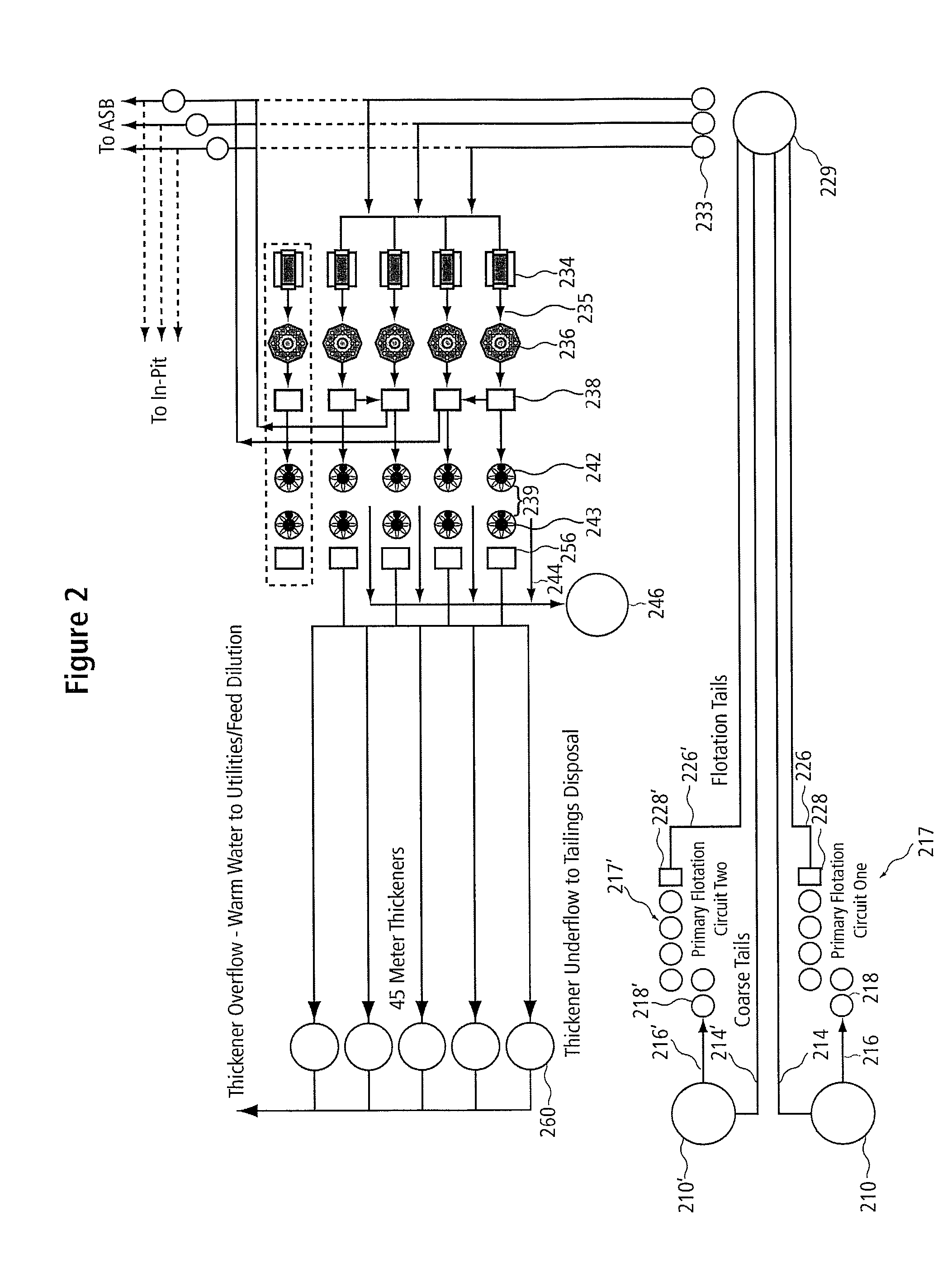Bitumen and thermal recovery from oil sand tailings
a technology of oil sand tailings and bitumen, which is applied in the direction of hydrocarbon oil treatment, liquid hydrocarbon mixture production, petroleum industry, etc., can solve the problems of high thermal energy requirement per tonne of oil sand processed for steam production and heating hot flood water, difficult to find thermal energy sources for the lee process, etc., to facilitate the settling of fines, increase the overall bitumen recovery, and compact tailings
- Summary
- Abstract
- Description
- Claims
- Application Information
AI Technical Summary
Benefits of technology
Problems solved by technology
Method used
Image
Examples
Embodiment Construction
[0055]The present invention is exemplified by the following description. This embodiment of the present invention is described for recovering heat and residual bitumen from pooled primary and secondary tailings.
[0056]A schematic of an inline or in series process of the present invention is shown in FIG. 1. Conditioned oil sand slurry, for example, slurry produced by the LEE process and conditioned in a pipeline, is fed into primary separation vessel (PSV) 10 and allowed to separate under quiescent conditions into a top layer of bitumen froth 11, commonly referred to in the art as “primary froth”, a middle layer of middlings 16, including primarily warm water, fines and residual bitumen, and a bottom layer of coarse tailings 14, including primarily coarse solids, warm water and residual bitumen, which are commonly referred to in the art as “primary tailings”.
[0057]Bitumen froth 11 is typically removed from the PSV via launder 12 and collected for further upgrading by upgrading proces...
PUM
| Property | Measurement | Unit |
|---|---|---|
| temperature | aaaaa | aaaaa |
| temperature | aaaaa | aaaaa |
| temperature | aaaaa | aaaaa |
Abstract
Description
Claims
Application Information
 Login to View More
Login to View More - R&D
- Intellectual Property
- Life Sciences
- Materials
- Tech Scout
- Unparalleled Data Quality
- Higher Quality Content
- 60% Fewer Hallucinations
Browse by: Latest US Patents, China's latest patents, Technical Efficacy Thesaurus, Application Domain, Technology Topic, Popular Technical Reports.
© 2025 PatSnap. All rights reserved.Legal|Privacy policy|Modern Slavery Act Transparency Statement|Sitemap|About US| Contact US: help@patsnap.com



